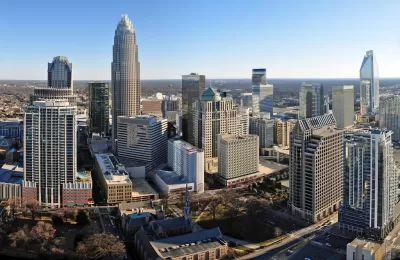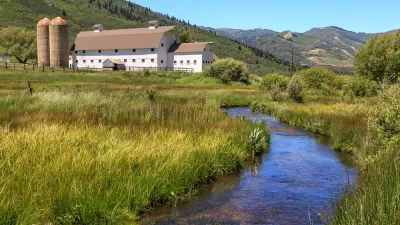North Carolina cities are thriving, but rural counties are not experiencing the same level of growth. Still, residents in rural areas say the numbers do not necessarily capture the whole picture.

Bruce Henderson and Danielle Chemtob take a closer look at the urban-rural divide through what is happening in North Carolina. The population of the state is increasing, but growth has been uneven. In terms of population, employment, and median household income, urban counties are seeing positive changes, while the state’s rural counties are lagging behind.
"The economic connection between cities and their surroundings is vital, [experts] say. Outlying counties are where food is grown, thousands of commuters live and city folk recreate. For all the millions of dollars invested in cities, [Brian] Dabson and others say, they will prosper only as well as their regions do," write Henderson and Chemtob.
While the statistics paint a somewhat dire picture, Henderson and Chemtob also describe rural areas where residents say their quality of life is good and they do not miss the amenities cities have to offer. A number of rural towns have also successfully reinvented themselves through tourism and diversified industrial bases.
And the division and differences between urban and rural areas may not be so clear-cut, they add. "Some cities struggle economically, after all, while many rural places thrive. Small towns, suburbs and commuter corridors act as bridges between them — all suffering traffic congestion, a shortage of affordable housing and loss of farmland to sprawl."
FULL STORY: NC cities grow at record pace while rural counties fall behind

Maui's Vacation Rental Debate Turns Ugly
Verbal attacks, misinformation campaigns and fistfights plague a high-stakes debate to convert thousands of vacation rentals into long-term housing.

Planetizen Federal Action Tracker
A weekly monitor of how Trump’s orders and actions are impacting planners and planning in America.

In Urban Planning, AI Prompting Could be the New Design Thinking
Creativity has long been key to great urban design. What if we see AI as our new creative partner?

King County Supportive Housing Program Offers Hope for Unhoused Residents
The county is taking a ‘Housing First’ approach that prioritizes getting people into housing, then offering wraparound supportive services.

Researchers Use AI to Get Clearer Picture of US Housing
Analysts are using artificial intelligence to supercharge their research by allowing them to comb through data faster. Though these AI tools can be error prone, they save time and housing researchers are optimistic about the future.

Making Shared Micromobility More Inclusive
Cities and shared mobility system operators can do more to include people with disabilities in planning and operations, per a new report.
Urban Design for Planners 1: Software Tools
This six-course series explores essential urban design concepts using open source software and equips planners with the tools they need to participate fully in the urban design process.
Planning for Universal Design
Learn the tools for implementing Universal Design in planning regulations.
planning NEXT
Appalachian Highlands Housing Partners
Mpact (founded as Rail~Volution)
City of Camden Redevelopment Agency
City of Astoria
City of Portland
City of Laramie





























